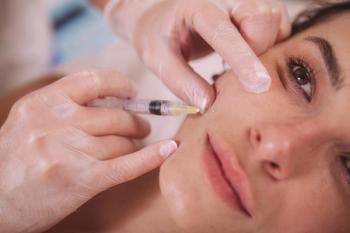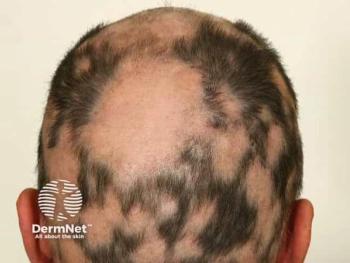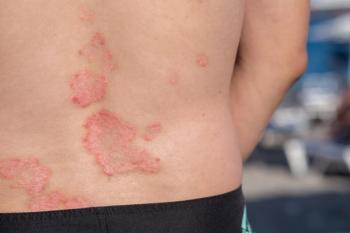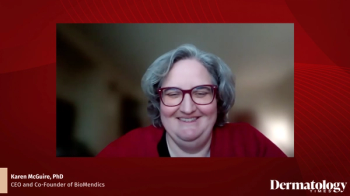
How is Artificial Intelligence Growing Up?
Joseph Zabinski, PhD, MEM, of OM1, shares insights at AAD into how artificial intelligence can mature and be a positive tool for disease detection.
At the 2024 American Academy of Dermatology Annual Meeting in San Diego, California, Joseph Zabinski, PhD, MEM, the managing director of artificial intelligence (AI) and personalized medicine at
Zabinski and Stefan Weiss, MD, MBA, FAAD, the managing director of dermatology at OM1, recently wrote the
Dermatology Times: In your February cover feature in Dermatology Times, you mentioned that 2024 is the year that AI grows up. What specifics are needed for AI to mature?
Zabinski: I think 2024 is the first year that it will begin to grow up, it's sort of an adolescent that's going to take more time to get there. But specifically to me, that means a couple of things. One is providers and providers' systems starting to take this stuff seriously. It's not that that hasn't been the case for years, but it's certainly been more of an early adopter phase where there's immediate benefit but also a certain amount of desire to believe in what this can do. That drives adoption. I think what I hope to see and what I'd like to see this year is more of the not early adopters beginning to say this has proved out enough now that, you know we need to start taking this seriously and implementing tools and thinking about how they impact workflow. That's the provider world.
With respect to patients as well, I think AI has been very whip-lashy for the average person, right? There's been huge amounts of media in the past 18 months, there's been lots of hope. There's been lots of catastrophes that we all see about how AI tools are performing. And I think part of the growing up means individual patients being shown that these tools can do some things, they can't do everything, that they belong in the toolkit along with the lab tests and genetic tests, and they're not going to supersede those things but they're also not going to be toys just off to the side somewhere.
And then the final one is we really need to take questions about the practical use of these tools to heart, and these are the questions that we get around bias, the questions that we get around making sure performance is high across time at an implementation and across instances from practice, to practice and so on. Those have been theoretical problems. Lots of people have been working on them too for years, but as a sort of AI health care industry, that needs to sink in for everybody for this to really grow up, because otherwise, if the providers are adopting things and if the patients are getting familiar and then these platforms blow up because we're not taking those issues seriously, it's going to set everything back and do harm. Those are the set of specifics I would hope to see.
Dermatology Times: How is OM1 leading AI forward in developing models correctly and ethically?
Zabinski: At OM1, we are clinically led as you know, we've always been that and we've always built AI with clinicians hand in hand along the way. Just as much as our data science teams are doing good data science, we try to have clinical science that's sort of surrounding that at all points. I think that is a responsible way of doing the model development and sort of the refinement of the tools. And then, when we apply these things, OM1's approach is always we want the AI to work well, but we also want it to be explainable to folks who don't have the expertise to understand the technical way how it's working.
That's our whole concept of digital phenotyping as opposed to saying, “This is the black box model where you put in some data and you get out a number and go do something with the number.” We say, “Here are the things in the patient's history that are explaining to the model what's going on with them and that are letting the model pick out this patient as being at elevated risk of some bad thing or an elevated likelihood of benefiting from a treatment.”We try to stay tightly focused on the clinical applications such as diagnosis risk, and treatment benefits. And then to build these tools with clinician input along the way. I think, if I can be so bold, that's a good model for other AI folks who are working in the health care world.
Dermatology Times: How is OM1 being received by dermatologists at AAD?
Zabinski: I have been so happy with how the clinicians have reacted to us broadly. I can say more specifically with the sessions I've done. I've given 2 talks so far, mostly on our work in generalized pustular psoriasis using AI to help with problems of underdiagnosis, and the clinicians are getting out of their seats and going up to the mic and actually asking questions and engaging in some back and forth. That engagement looks like, “Are you thinking about patients who come into this disease state through an emergency setting versus those who don't?" That's a real clinician's question because they know how these patients show up. It tells me they're listening to what I'm saying. And then saying, "Okay, but has he thought about this and that and so on." I think I've given some solid answers that show them that OM1, from a data perspective and an AI perspective, is trying to do this right. The result has been some good conversations and good reactions. I've been delighted with the physician interaction at this conference.
Dermatology Times: Has anyone asked you a question in your sessions that you want to do more research on or that maybe surprised you?
Zabinski: There are several things that people have asked me to run, such as experiments that I haven't run, which is nice. They're actually quite in the weeds questions, for example, when Patient Finder, our tool for identifying undiagnosed patients, gets something wrong, "Are you seeing a lot of the wrong guesses that are actually a different disease?" Sometimes there's a closeness to diseases and the model can actually be good at finding another disease than we designed it for if those diseases are phenotypically similar. That's an experiment I want to go run.
Other questions have been about, "In practice, if I were to use a tool like this, where and when would I get the information and does that make a difference to me in my work in terms of my diagnostic pathway," for example. That is less of an unexpected question and more of I appreciate the diversity of options that go into that when I interact with the dermatologists here. You speak to one in a solo practice, you speak to another that is practicing with 20 other dermatologists, both need totally different answers to that common question. So, that's given me a lot to think about just interacting with different practice0setting folks here. It's been good and there's definitely more work to do.
Dermatology Times: What key takeaways do you want clinicians to remember from your sessions?
Zabinski: The first one is you need really good data to do good AI. In dermatology, this is so true. We're very lucky to work with AAD and their DataDerm registry because we can look at patients through that and through our own data sets to get that depth that we need for AI. My advice is to make sure your data are appropriate to your problem before you dive into it. The second thing is I try to remind people we start on any of these problems, like underdiagnosed rare disease, with the world as it is now. The world as it is now is that these patients are often underdiagnosed or undiagnosed, they can go years without an appropriate diagnosis and therefore lacking specialty care and treatment. So a lot of times I'll frame at the end of my talk, "We started with this problem and this is a solution I've just shown you how with really the press of a button, you can use this tool to analyze data set and highlight those patients who have been missing." And just that message sinking in is something that I want people to absorb and internalize. We couldn't do this before, now we can. I often say we shouldn't use AI to do things we could do just as well without tools. You don't need it. But this is one where there's a real problem and AI can help with it. The final point is these models are usable. They're not just academic constructs, right? At a meeting like this, it is actually nice when people tell you the 2 sides of that story. They show you good statistical results that you believe from a research perspective, but then they also tell you, “In my practice, here's what this means."That's something I tried to do in my talks to emphasize that AI is not perfect and going to replace everything, but it also serves a targeted need, and it makes things better than they were when we started.
Dermatology Times: Are there any other topics you found interesting at AAD?
Zabinski: I think another topic that I've heard discussion about a lot at this meeting, which I appreciate, and it's something OM1 has been working on for a while, is the association overlap between conditions across therapeutic areas. There's been a lot of attention I've seen here from non-OM1 folks about the cardiovascular linkages to dermatologic disease or the mental health aspects of disease. That's something we've spent a lot of time in because we have the data to let us see these multifactorial things going on. But to hear the providers talking about it and saying, "These are real things our patients experience, how can we understand the impact of what we do with their dermatologic disease on other body systems and how does that fit with what the patient wants,"it's cool to see that coming up a lot. I hope that that continues next year and going ahead because it is really what matters to patients, their whole health.
[Transcript lightly edited for space and clarity.]
Newsletter
Like what you’re reading? Subscribe to Dermatology Times for weekly updates on therapies, innovations, and real-world practice tips.


















